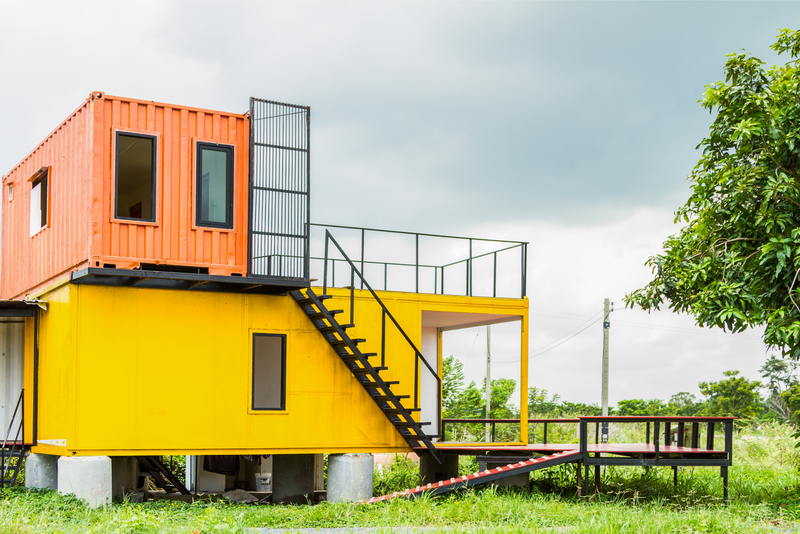Essential Steps to Properly Get Rid of Used PPE
During global health crises and daily safety protocols, Personal Protective Equipment (PPE) has become an essential part of our lives. From hospitals to workplaces, and even in our homes, masks, gloves, gowns, and face shields are instrumental in reducing health risks. However, proper disposal of used PPE is critical not only for compliance with health and environmental standards but also for preventing potential contamination and minimizing environmental impact. In this comprehensive article, we'll detail numerous essential steps to get rid of used PPE properly, ensuring both safety and sustainability.

Why Proper PPE Disposal Matters
Improper disposal of used PPE can lead to severe consequences. Used masks, gloves, and other equipment can harbor pathogens, contributing to the spread of infections. Additionally, PPE materials are predominantly made from plastics, posing a significant threat to the environment if not managed responsibly.
- Reduces the risk of infection and cross-contamination
- Prevents environmental pollution and plastic waste
- Ensures compliance with local regulations
- Protects sanitation workers and the public
Types of PPE Commonly Disposed
It's essential to understand what comprises PPE and how different items require unique disposal methods. Common types of PPE include:
- Masks (surgical, cloth, N95, respirators)
- Gloves (nitrile, latex, vinyl)
- Gowns and coveralls
- Face shields and goggles
- Shoe covers and hairnets
Key Steps to Responsibly Dispose of Used PPE
Follow these outlined steps to correctly dispose of used Personal Protective Equipment and protect yourself, others, and the environment:
1. Remove PPE Safely
The first crucial step in getting rid of used PPE is removing it without contaminating yourself or your surroundings. PPE should be taken off in a specific order to avoid self-contamination:
- Gloves come off first: Pinch the outside of one glove and peel it away, holding it in the gloved hand. Then, slide ungloved fingers under the remaining glove and peel off.
- Gowns and coveralls: Unfasten and pull away from your body, turning inside out as you remove them.
- Face shields and goggles: Remove from the back or sides, without touching the front.
- Masks/Respirators: Always remove by the straps or loops, never touch the front.
Dispose each item immediately according to proper protocols to minimize the risk of spreading contaminants.
2. Segregate Used PPE from Regular Waste
To correctly get rid of used PPE, it's important to separate PPE from everyday waste. Used PPE should not be disposed of in the regular trash where it can mix with general refuse. Instead:
- Use clearly-labeled containers specifically for PPE disposal.
- For households, double-bag used PPE in a strong, leak-proof bag.
- At workplaces and medical facilities, deposit in biohazard or infectious waste bins.
This step is vital for preventing accidental exposure to waste handlers and ensuring that contaminated items are treated with the appropriate care.
3. Follow Local Regulations for Disposal
Many regions have specific rules for the disposal of contaminated PPE. Check with your local health department or sanitation authority to understand requirements such as:
- Designated drop-off sites or collection days for medical waste
- Prohibited items in household or commercial waste streams
- Approved disinfecting procedures prior to disposal
Ignoring local PPE waste disposal rules can incur fines and create unnecessary health risks.
4. Package PPE Waste Securely
Proper packaging is essential to minimize leaks, spills, and direct contact during collection. Always:
- Double-bag PPE waste for added safety
- Seal each bag tightly, using ties or adhesive tape
- Ensure bags are not overfilled to prevent ruptures
- Label the bags as "PPE Waste" or "Contaminated" if required by regulations
This process significantly reduces the risk of exposure for your family or for sanitation workers down the collection line.
5. Arrange for Safe Collection and Disposal
For businesses, especially in healthcare, partner with licensed medical waste disposal companies that specialize in PPE waste management. At home, adhere to municipal guidelines:
- Leave PPE waste outside at designated locations or in dedicated bins for pickup
- Do not place used PPE directly in recycling bins or compost
- For large amounts of PPE waste, such as after an event or in care facilities, contact professional disposal services
6. Wash Your Hands Thoroughly After Disposal
Hand hygiene is essential after handling and disposing of any used PPE. Immediately wash your hands following the 20-second rule with soap and water or use an alcohol-based sanitizer if washing is not possible. This final step is crucial in breaking the chain of infection.
Eco-Friendly Tips for Disposing of PPE
Why Environmental Considerations are Important
Most PPE items are made from non-biodegradable plastics, such as polypropylene and polyvinyl chloride. If disposed of improperly, these items can end up in landfills or waterways, causing harm to wildlife and contributing to the global plastic crisis. Implementing green PPE disposal practices mitigates these effects.
Environmental Best Practices
- Consider reusable PPE (e.g., washable masks and gowns) wherever possible
- Never flush PPE down toilets or sinks, as it can block pipes and end up in oceans
- Look for recycling programs in your area that accept specific types of PPE, such as certain masks or face shields
- Educate yourself and your community on the impact of PPE waste and how to minimize it
Some manufacturers offer take-back programs for used PPE, converting them into useful materials or energy. Search local or online resources for these initiatives.
Special Considerations for Workplaces and Institutions
High-volume PPE users, such as hospitals, dental clinics, construction sites, and factories, must have robust protocols for PPE waste management. Proper PPE disposal procedures should be incorporated into workplace safety training and occupational health policies.
Best Practices for Organizational PPE Disposal
- Provide clearly marked, foot-operated bins in high-risk and high-traffic areas
- Train staff on correct PPE removal and disposal procedures
- Work with licensed hazardous waste contractors for compliant handling and disposal
- Regularly audit PPE waste management to ensure compliance and safety
For COVID-19 or infectious disease scenarios, enhanced protocols are needed:
- Disinfect contaminated PPE before final disposal if stipulated by health authorities
- Log or document PPE disposal as part of infection control records
- Provide PPE disposal fact sheets in multiple languages to reach all workers
What Not to Do with Used PPE
Improper actions can increase the risk of harm. Be sure to avoid:
- Avoid littering PPE items in public places, walkways or parking lots.
- Do not burn PPE waste in open fires: This releases toxic fumes.
- Do not reuse single-use PPE unless explicitly intended and designed for reuse.
- Never place used PPE in recycling bins with clean recyclables, as this could contaminate the whole batch.
Innovative Solutions for PPE Waste Management
As PPE use has surged, innovative solutions are emerging to address the global increase in PPE waste:
- PPE Recycling Programs: Companies now accept masks, gloves, and gowns to turn them into construction materials or new plastic products.
- Biodegradable PPE: Some manufacturers have introduced PPE made with plant-based or compostable materials, reducing long-term environmental impact.
- Onsite PPE Waste Treatment Technologies: Hospitals and labs can use specialized machines to disinfect and compact PPE waste, making disposal safer and space-efficient.

FAQs about Proper Used PPE Disposal
Is it safe to recycle used PPE?
No, used PPE generally should not go in standard recycling bins due to contamination risk. Only use specialized programs designed specifically to process PPE waste.
What is the best way to dispose of gloves after use?
Remove gloves by turning them inside out and bag them in a dedicated container. Seal tightly before disposal. Always wash hands afterwards.
Can cloth masks be thrown away like single-use masks?
Reusable cloth masks should be washed according to manufacturer instructions and only disposed of when damaged. Single-use masks should be bagged and discarded as PPE waste.
What do I do if there's no PPE disposal bin nearby?
Double-bag your used PPE and store safely until you can dispose of it at a designated location or in accordance with local guidelines.
Are there penalties for improper PPE disposal?
Yes, many governments impose fines or penalties for improper disposal of medical or hazardous waste, including PPE.
Summary: Protecting Health and the Planet by Disposing of PPE Responsibly
In conclusion, the proper steps to get rid of used PPE are not only essential for preventing the spread of infections but also for safeguarding our environment from plastic pollution. The best practices to dispose of PPE involve:
- Careful removal to avoid contamination
- Segregation from regular waste
- Adhering to local regulations for disposal
- Secure packaging and labeling
- Safe hand hygiene post-disposal
- Considering sustainability and recycling where possible
As we continue to rely on PPE for daily protection, let's remember our collective responsibility for the health of society and the planet. By following these essential steps to properly dispose of used PPE, you are making an impactful difference--protecting lives and preventing unnecessary waste.
Stay safe, stay informed, and always dispose of PPE the right way.
